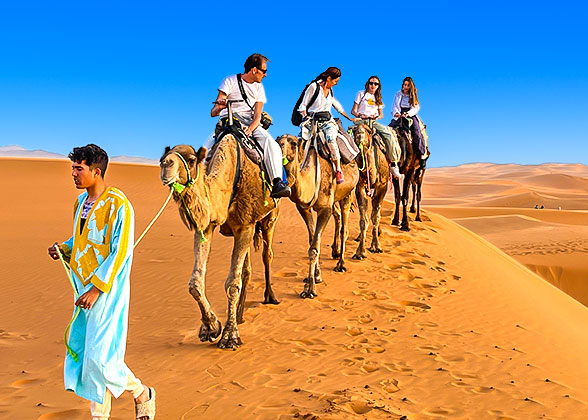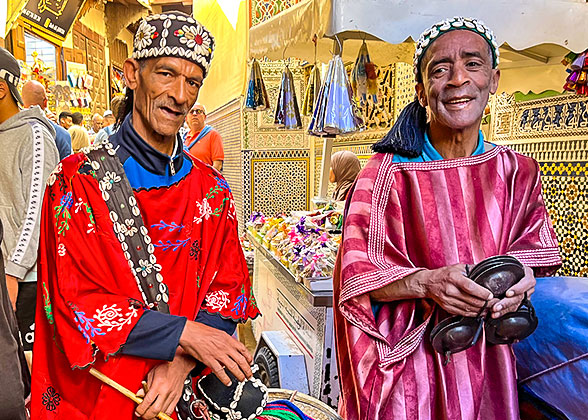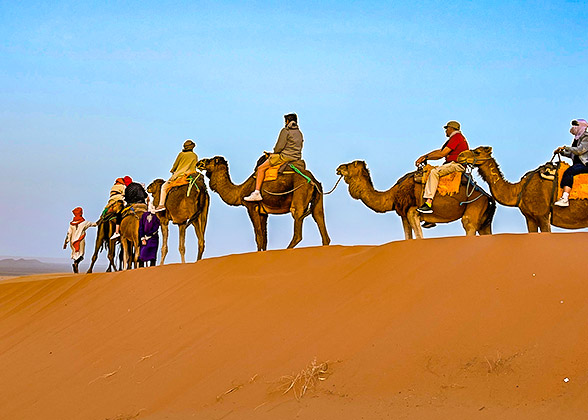Day 1: Arrival in Mauritania
You will fly to Nouakchott, the capital of Mauritania which lies in the west of the Sahara Desert in Africa. After arrival, you will go to check in the hotel and have a good rest.
|
Day 2: Nouakchott - Touilit - Nouamghar - Timirist
In the morning you will leave Nouakchott for the seaside by way of the Great Dune. If time is available today, you will stop and have a view of the tide. Then move on to visit the fishing village Touilit. There are canoes of different colors around the coast of the village. After the visit in Touilit, you will head to Nouamghar and finally get to Timirist which locates at the entrance of Banc d’Arguin National Park.
|
Day 3: Banc dArguin - Louik
Banc d’Arguin National Park is one of the most important natural reserve areas in the world and a World Natural Heritage recognized by the United Nations. The place is the best choice for bird observers, since birds definitely pass here when they fly from Europe to South Africa. Many birds stop here on their way and propagate here. That is also where its significance and meaning lie in. You will have an all-day visit in this national park. After the visit you will continue the trip to Louik.
|
Day 4: Louik - Nouadhibou
You will go to the desert area in Nouadhibou from Louik in the morning. Nouadhibou is the second largest city of the ancient North African country Mauritania. On arrival, you are going to visit “Cap Blanc”, which is an area expanded from the Banc d’Arguin National Park. The area is set to protect the monk seals which are dying out.
|
Day 5: Nouadhibou - Choum
After sightseeing in Nouadhibou, you will take the Train of the Desert and start today’s journey. The train is the longest and also the heaviest one in the world, with a length of 2 kilometers. It is also responsible for carrying minerals from Zouerate to Nouadhibou. You will take this train to get to Choum and have a tour around the city upon arrival.
|
Today you will head to Terjit which lies at the foot of Mauritanidas Mountains. It can be called an oasis in the desert, where there are many hot springs, making it a rare place for relax during your journey. Hot spring bathing will be arranged for you, so as to get rid of the tiredness which is created from the start of your tour.
|
Day 7: Terjit - Azougui - Atar - Chinguetti
After leaving Terjit, you will first go to visit Azougui, which is an ancient city built in 11th century. Now it is a divine place, for there is the tomb of Imam El-Hadrami. In the afternoon, you will head to Chinguetti, which is an Islamic city and also listed as one of world cultural heritages by the United Nations.
|
Day 8: Chinguetti - Ouadane
Your journey today will be very hard as you will travel across the real desert areas, where there are only dunes and sands with no trace of roads. You will have an actual experience of going through the desert without any contact with the outside world. After going through the desert, you will arrive at Ouadane. Here you are going to visit the museum of Ouadane to learn something about the local culture and history.
|
This morning, you will go to Tinigui by riding camels and pay a visit to the North African Islamic hermit families. You will get to know their life and culture there.
|
Day 10: Tinigui - Amogjar - Atar
You will first go to Amogjar today. You will have a view of the pre-historic frescoes in Amogjar canyon and learn about the conditions of this area at that time from the frescoes. There were elephants, giraffes and other animals at that time but now all those animals have died out in this area. After that you will proceed to Atar, where there is the largest and most colorful market of this area. You can not only purchase anything you like but also feel the typical Sahara trade atmosphere.
|
Day 11: Atar - Tagant Desert
Today you will first make a series of preparations at Atar and then set off to Tagant Desert.
|
Today you will go across desert, mountains, sand dunes and plains, and have a full view of the magnificent desert scenery made up by them.
|
Day 13: Tagnant Desert - Tidjikja
Today you will go through the desert and finally get to the city of Tidjikja built by the moor tribes in 1680. Tidjikja has its unique architecture styles. All the local buildings are full of geometrical drawings and decorations with pictures of mythical animal. In addition to your visit in urban district of the city, you will also go to visit the palm forest in Tidjikja. This palm forest is also the largest one in Mauritania.
|
Day 14: Tidjikja - Lekhcheb
After breakfast, you will leave Tidjikja for Lekhcheb and go sightseeing there.
|
The theme of you travel in the following days is “from dune to dune and well to well.” You will go to tour around Zig. After arrival there, your tour team will receive the highest guest welcome and treatment from the local people, for there are rarely tourist visiting this village, and your visit will be regarded as a festival.
|
Today you will go to the city of Tichit with rich history. On arrival you will be able to see a lot of well-preserved historical houses. The city is divided into two parts. The houses in the north part are mainly made of green rocks while most of the houses in the south part are red in color.
|
Day 17: Tichit - Aratane - Tagouraret
In order to go to Oualata tomorrow, today you will head to Aratane and Tagouraret along the Dhar Tichit and Dhar Oualata Mountains.
|
Day 18: Tagouraret - Oualata
After one night’s rest, you will go to Oualata in the morning. Oualata is publicly known as the most beautiful city in Mauritania, especially the old urban area of this city. The city was once the most important trade and commerce centre of the desert trade teams, and it also has one of the most significant Quran schools of the Islamic world.
|
Today you will have an all-day sightseeing in Oualata. Buildings in the city have distinguishing features of Arabic Islamic architecture. In the 15th century, there were once tens of thousands of Arabic and black African Muslim scholars gathering in this city to taught and studied Quran, the Arabic language as well as philosophy, mathematics and astronomy etc. The city was the Islamic center at that time. As commerce developed along the coastal area of the Atlantic Ocean, the old trade road faded gradually. Many buildings in this city are covered by sands, and there are few residents living here. You will explore these historical remains this time.
|
Day 20: Oualata - Nema - Ayoun - Kiffa
Travel to Nema in the morning which is one end of the “Road of Hope.” After sightseeing here you will head to the capital city of Hodh el-Gharbi area, Ayoun. In the afternoon, you will end the whole day’s tour in Kiffa, the capital city of Assaba area. Kiffa is famous for its local handicrafts, thus you can pick some handicrafts you like here.
|
Today’s tour will take you to visit the city of Selibabi which lies in the south border of Mauritania. The city locates between Senegal and Mali and the climate here is different from the areas you have traveled along the route. You will go sightseeing in this city on arrival.
|
In the morning, you are going to visit the city of Kaedi which lies on the side of Senegal River. It is a good place for you to know about Black African culture and Moorish culture. Moreover, the market here is particularly attractive.
|
You will take a cruise tour by canoes along the Senegal River today, and you will learn a lot from what you see and hear during the way.
|
Day 24: Kaedi - Bogue - Rosso - Keur Massene
Depart from Kaedi today. After passing through Bogue and Rosso, you will finally arrive at the village of Keur Massene which locates in the hunting area.
|
Day 25: Keur Massene - Diawling Park - Nouakchott
The morning tour will begin with the visit of Diawling Park. There you will have chances to have a close contact with the Atlantic Ocean. After that you will go back to the capital of Mauritania, Nouakchott.
|
Day 26: Departure from Mauritania
You will start your visit to Nouakchott in the morning. Nouakchott is the center of politics, economy, culture and transportation of Mauritania. All of the local residents, whoever Moorish or black, the old or the children, can sing and dance. The clothes of the Nouakchott people are unique, with rich national and regional characteristics. Today you will first visit the market and museums in Nouakchott. If time is available in the afternoon, you will go to have a view of the beautiful sceneries of the Atlantic Ocean and visit the busy and crowded fishing ports. You will go to the airport and leave Mauritania by air in the evening. That is the end of the 26 days’ tour of Mauritania.
|


